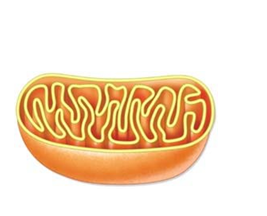A patient presents in the emergency room with muscle twitches, uncontrolled laughter, stumbling gait, and lack of coordination. While taking her history, she shares that she has recently returned from a mission trip to Papua, New Guinea. In the interest of “going native,” she agreed to partake in a ritual of cannibalism at a mortuary feast with the local tribes. For several months after the feast, she experienced headaches and joint pain while slowly her ability to walk with a steady gait declined. What disease is characterized in this case study?
a. bovine spongiform encephalopathy
b. Creutzfeldt-Jakob disease
c. kuru
d. mad cow disease
c. kuru
You might also like to view...
At the end of meiosis I
A. cells are haploid. B. cells are diploid. C. sister chromatids are in separate cells. D. the homologous pairs are in separate cells. E. the cells are haploid and the homologous pairs are in separate cells.
Answer the following statements true (T) or false (F)
1. This diagram shows the chloroplast, in which aerobic respiration takes place.

2. Because clindamycin and similar antibiotics bind to bacterial ribosomes, they work by inhibiting translation in the bacterial cells.
3. There are only two main types of RNA, tRNA and rRNA, needed to make proteins.
4. Transcription is the process by which cells use the information of RNA molecules to make proteins.
5. Transfer RNA delivers amino acids to the ribosome during protein synthesis.
Which organelle has enzymes that break down fatty acids, amino acids, and toxins?
a. lysosomes b. peroxisomes c. Golgi bodies d. vacuoles e. rough ER
Which type of skeleton contains the carbohydrate called chitin
a. exoskeleton of insects, crabs, and lobsters b. hydrostatic skeleton of earthworms c. fluid skeleton of jellyfish endoskeleton of lizards d. appendicular skeleton of humans